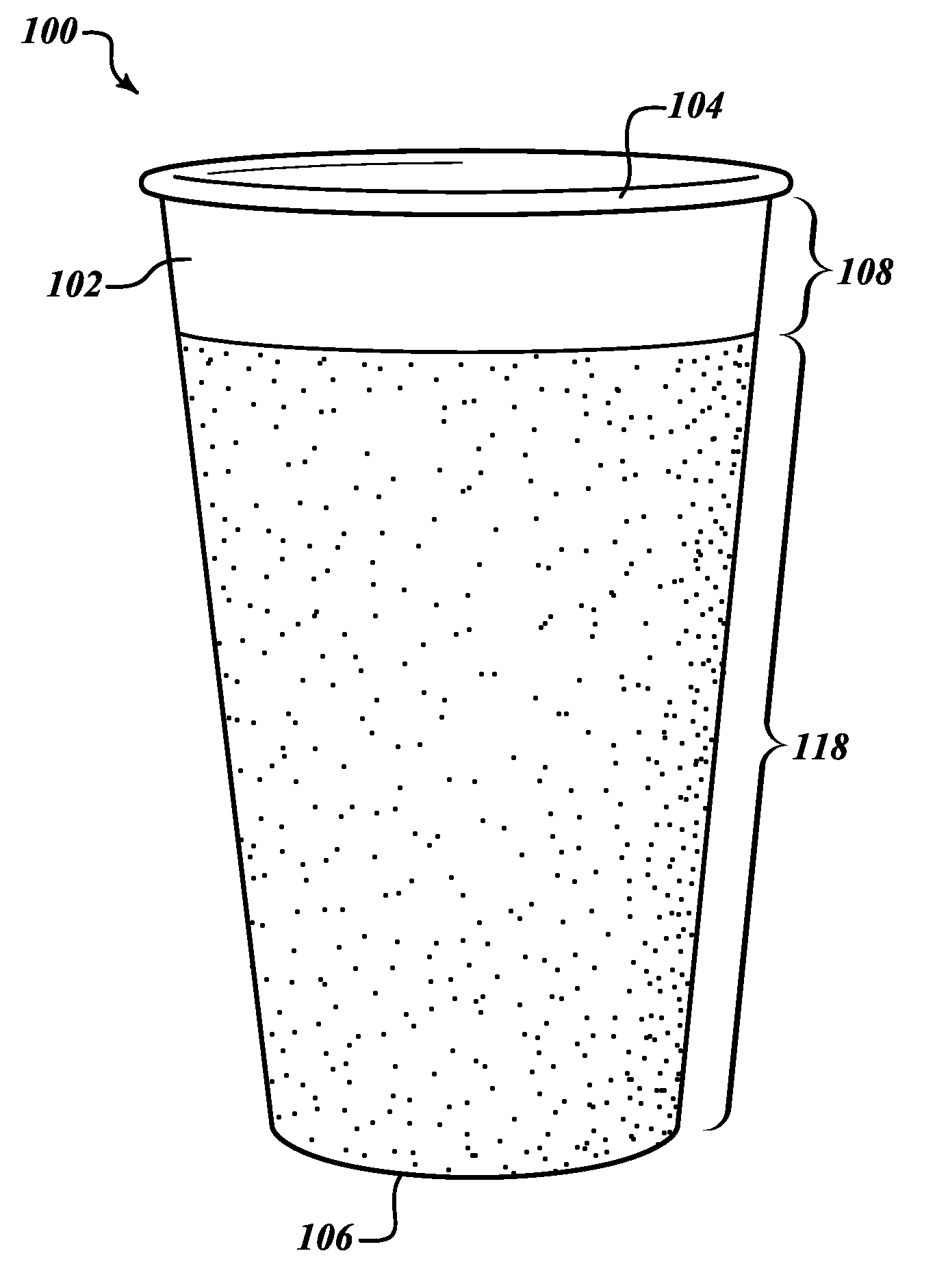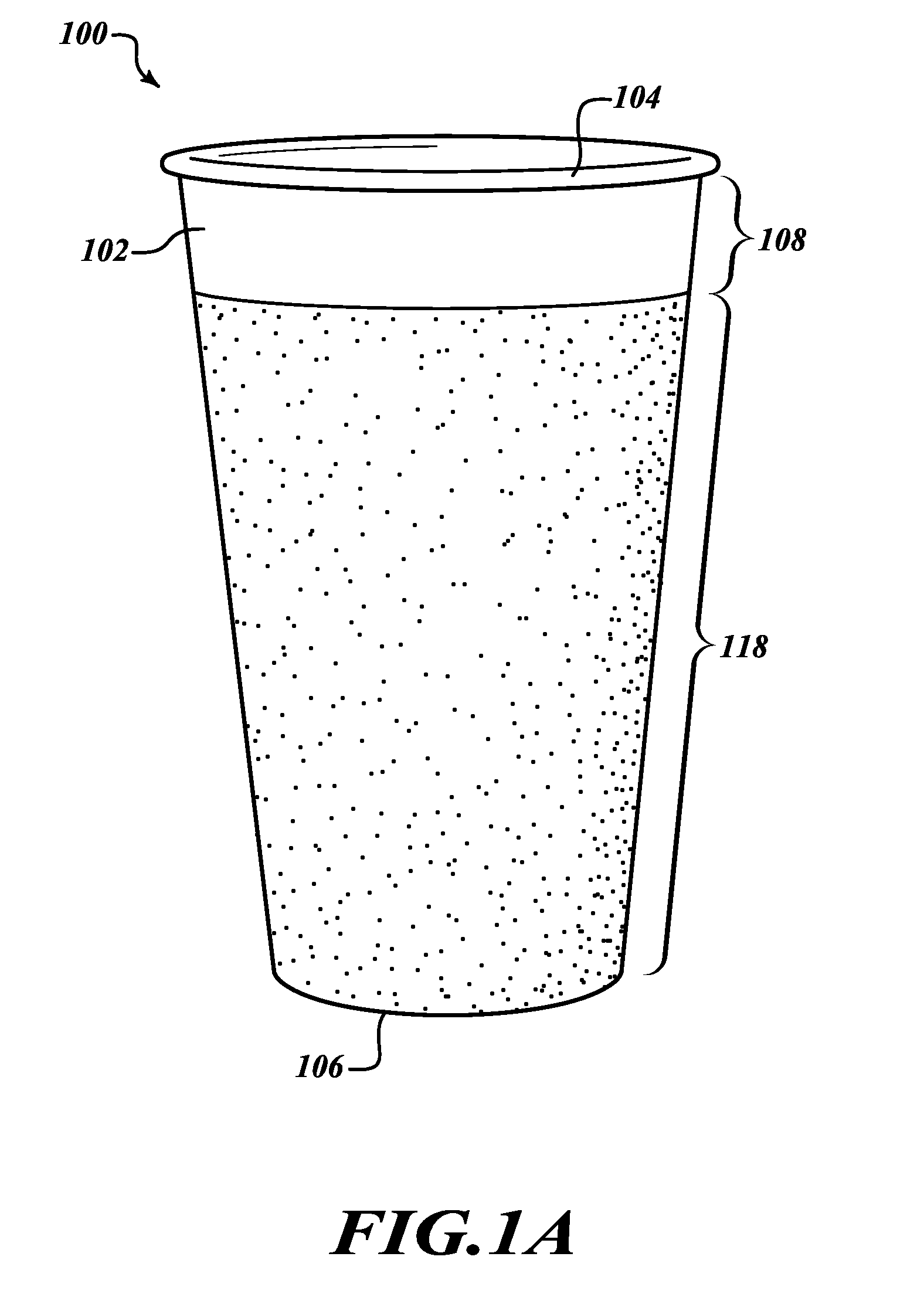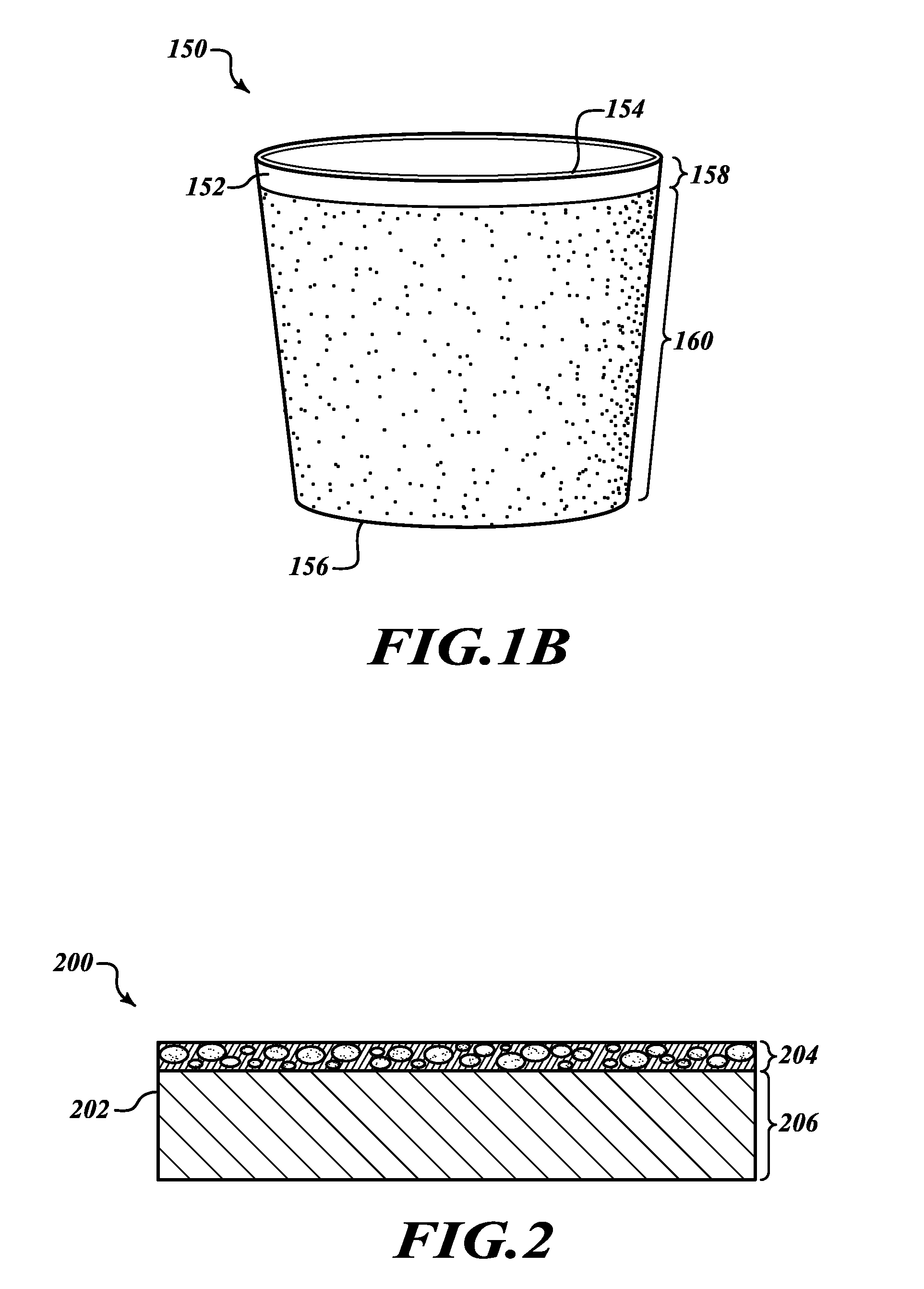Disposable containers and utensils for sanitizing
a technology for utensils and containers, applied in the field of utensils for sanitizing and disposable containers, can solve the problems of inability to use utensils, and inability to meet the needs of people, etc., and achieve the effect of reducing the number of utensils and ensuring the health of people, and reducing the number of u
- Summary
- Abstract
- Description
- Claims
- Application Information
AI Technical Summary
Benefits of technology
Problems solved by technology
Method used
Image
Examples
Embodiment Construction
[0022]In accordance with an exemplary embodiment of the present invention, FIG. 1A illustrates a cup 100 coated with an antibacterial agent. The cup is made out of a disposable material. The cup can be made out of any disposable material known in the art including but not limited to plastics, cardboard, paper (including wax coated paper), and Styrofoam. The exterior of the cup 102 is generally the area where a person grasps or handles the cup. While the present embodiment does not show any markings on the exterior of the cup, the invention is not so limited; the exterior of the cup can have markings including graphics, pictures, text, and other markings well known in the art. These markings may be aesthetic in nature and may include the marque or brand of a company (e.g., markings associated with a logo or trademark). The exterior may also be translucent or opaque.
[0023]The cup exterior, as illustrated, has two distinct portions: an uncoated section or portion 108 which is not treat...
PUM
 Login to View More
Login to View More Abstract
Description
Claims
Application Information
 Login to View More
Login to View More - R&D
- Intellectual Property
- Life Sciences
- Materials
- Tech Scout
- Unparalleled Data Quality
- Higher Quality Content
- 60% Fewer Hallucinations
Browse by: Latest US Patents, China's latest patents, Technical Efficacy Thesaurus, Application Domain, Technology Topic, Popular Technical Reports.
© 2025 PatSnap. All rights reserved.Legal|Privacy policy|Modern Slavery Act Transparency Statement|Sitemap|About US| Contact US: help@patsnap.com



